Here are 7 essential spring lawn care jobs to keep your grass lush and healthy
A good spring lawn schedule needs to include some, or all, of these steps each year


A good spring lawn care routine includes important tasks that help a lawn grow thick and healthy. When done annually, the grass will look its best for summer and be able to withstand heavy use.
Aerating, scarifying, fertilizing, overseeding and mowing a lawn are among the essential maintenance jobs to complete once the grass starts growing again in spring.
I looked after many lawns while working in historic public gardens in the UK and led the annual spring lawn care regime. The lawns had to look good and withstand large amounts of visitors. Here are seven spring lawn care tasks that I advise doing to help get the health of your lawn off to a great start each year.

When to start your spring lawn care steps
When you start working on your lawn will depend on your climate and US hardiness zone. Once the temperatures start to increase, and the risk of frosts is over, then the grass will start to actively start growing again.
Only then should you start on a spring lawn care schedule. Avoid walking on, or working on, frozen or very wet grass, as this will be a lawn care mistake that can damage the lawn itself, as well as the soil underneath, and the grass will take time to recover.
1. Clear debris
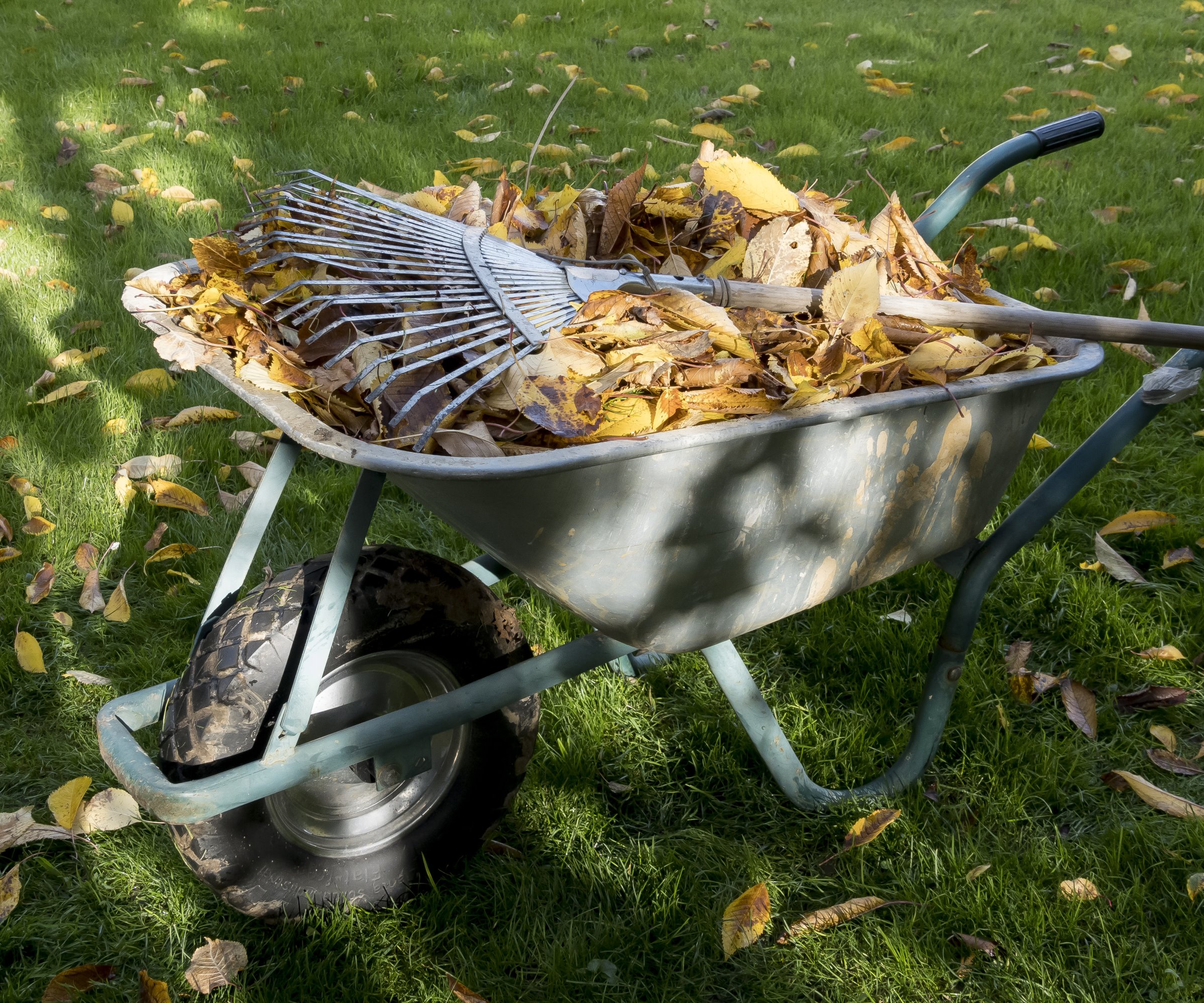
The winter weather can leave a mess behind and even what was a green and thick lawn last summer may seem less than desirable come the start of spring. So now comes the time to start that spruce up.
Any branches, twigs, pine cones, fallen leaves, or any other debris, that remains on the lawn needs to be collected up and removed before doing any other spring lawn care steps. Not only will this material suffocate the grass by smothering it and blocking out light, but matted leaves and debris can also be a breeding ground for diseases.
2. Gently mow
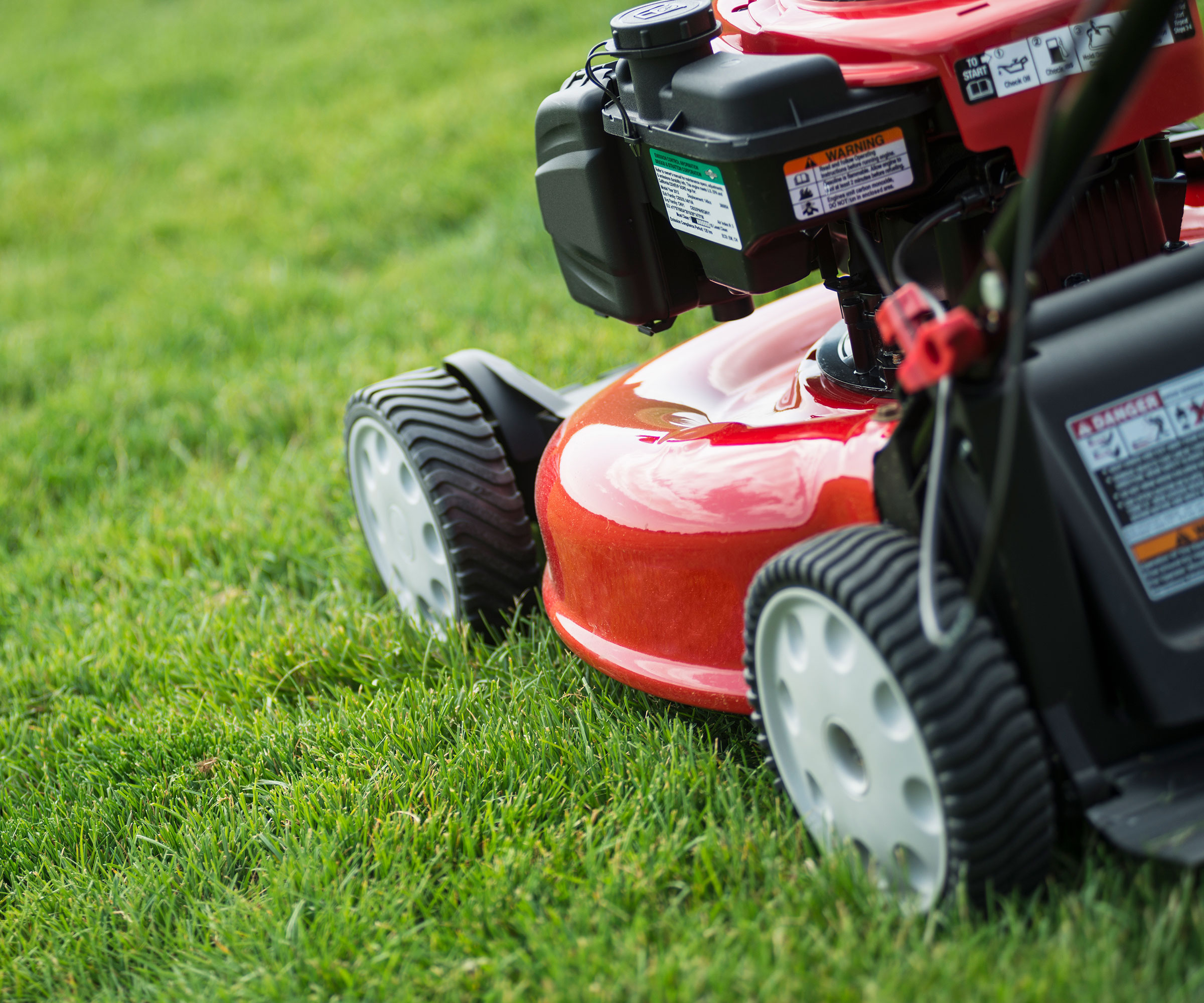
There is no rush to start cutting a lawn again. You can start mowing a lawn in spring once the grass is actively growing, but avoid going out with the lawn lower when the grass is wet or the ground moist underfoot.
The lawn will benefit from a high mower height in spring, aim to simply remove the the straggly length off the top and do not be tempted to go too low. A gentle mow is recommended around a week before starting the other spring lawn care steps. Always ensure that lawn mower blades are sharp before heading out for the first cut in spring.
3. Remove thatch
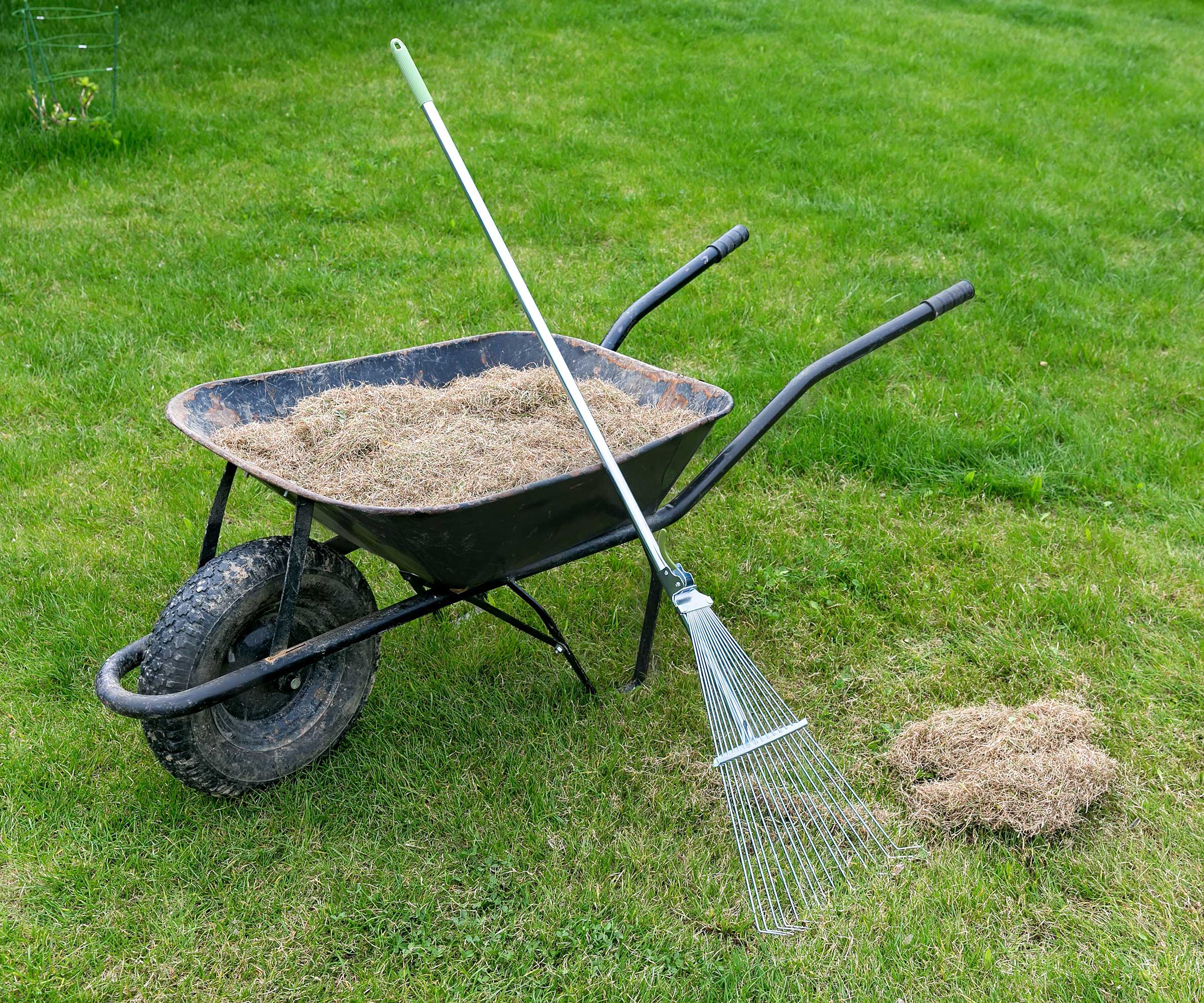
Scarifying, or dethatching, the lawn is an essential spring lawn care task that removes all the thatch from inside the lawn. That thatch is made up of lots of organic material, both dead and living, that sits on the soil surface and underneath the grass blades.
If you dethatch a lawn in spring you will also get rid of moss that can build up in lawns. Thatch can restrict airflow and the amount of water that gets down into the soil, while it is also where fungal diseases can become rife - so removing it boosts the overall health of a lawn.
You will often see the terms scarifying and dethatching used interchangeably, however, the main difference is that dethatching only works through the top surface layer while scarifying is a more aggressive way of removing thatch and moss. When it comes to how to scarify a lawn, it can be done with a garden rake or a mechanical machine.
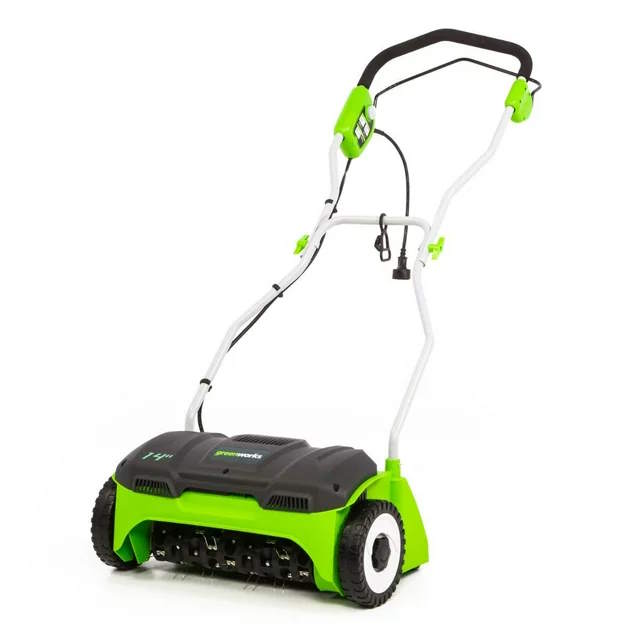
Remove layers of dead growth or matted materials to keep grass healthy and growing, and clear a wide 14 in. path with the stainless-steel tines. The ergonomic adjustable handle provides user comfort throughout the job to help reduce fatigue.
4. Get spiking
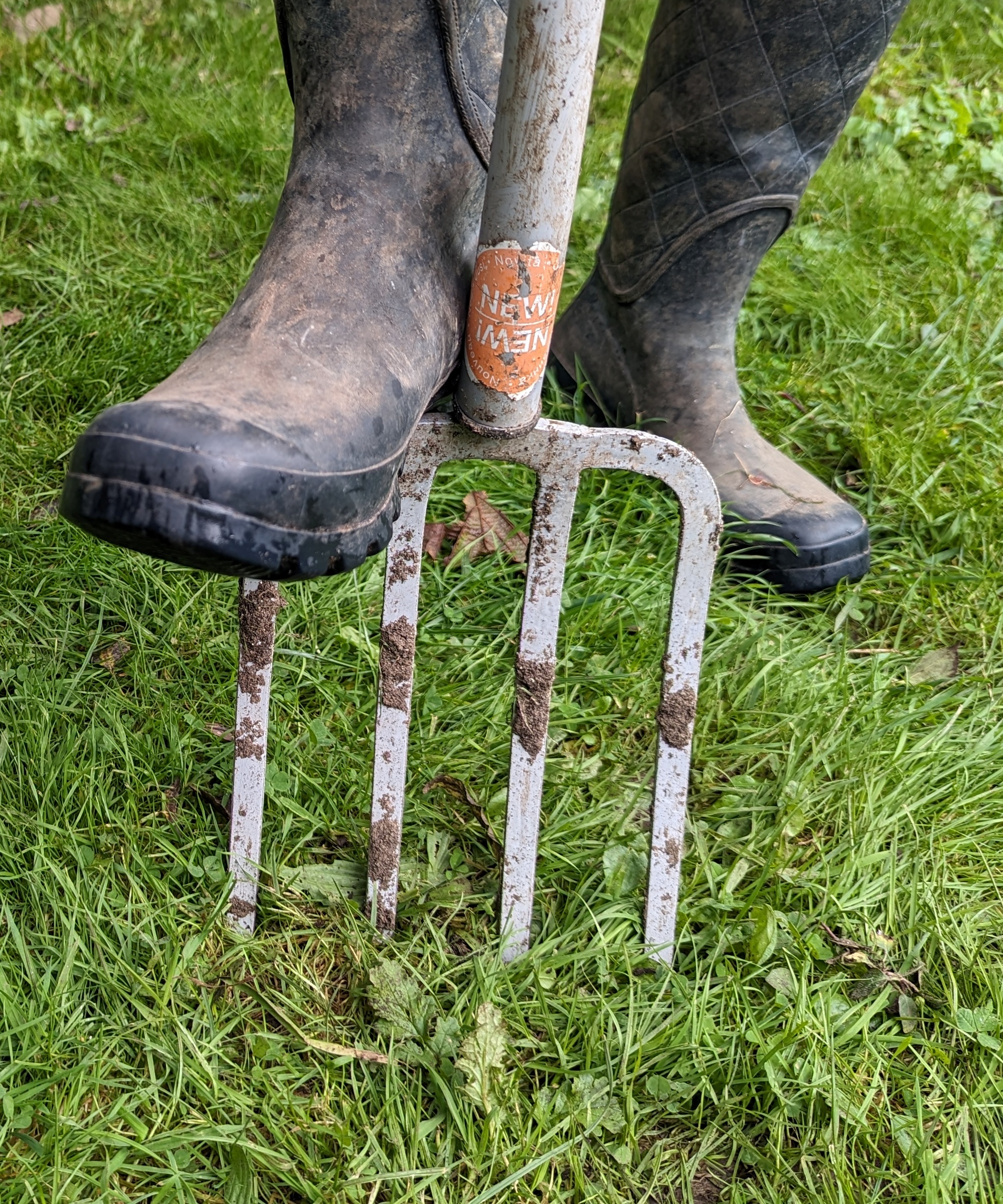
Aerating a lawn in spring offers several benefits that can help give you a healthy lawn come summer. The process relieves compaction, boosts drainage, and increases airflow into the lawn which can help the development of strong roots - this means you benefit from a lawn that can withstand all the rigours of lots of usage once the warmer weather arrives.
Again, like with dethatching, there are options for how to aerate a lawn - and it may depend on the size. You can get machines to do the task, or it can simply be done with a garden fork by spiking.
Alternatively, you can get shoes with spikes on which means you can walk the lawn and aerate as you go. It is advised to aerate before fertilizing and also aerate before seeding a lawn.
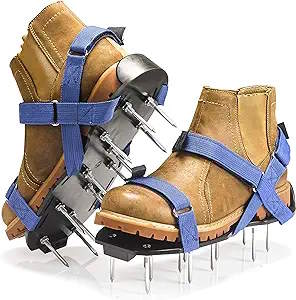
A pair of aerator shoes with 2.1-inch spikes that can make aerating a lawn quick and simple. The X-strap technology holds your shoe snugly in the gardening boots
5. Spread seed
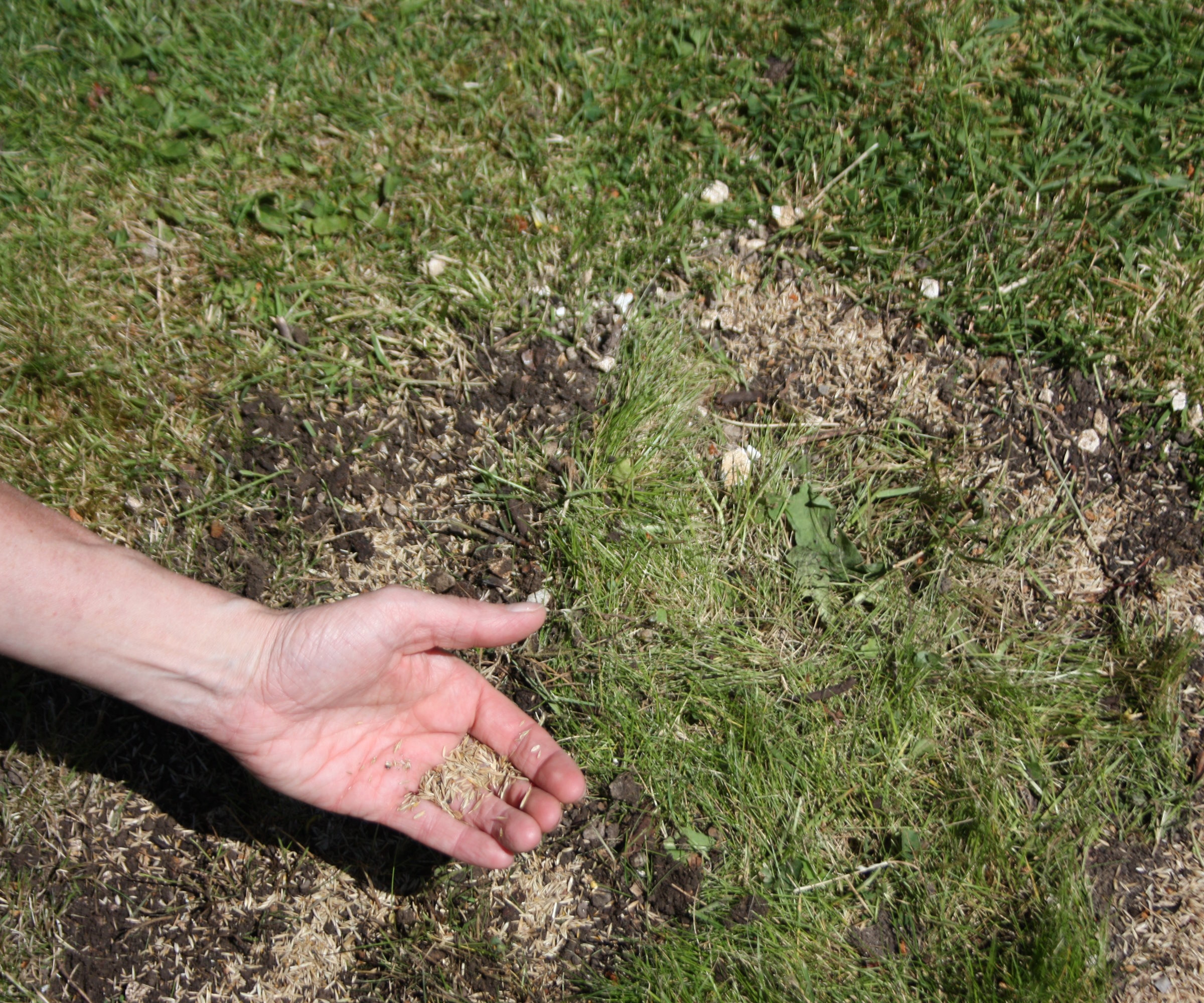
Spring is a great time of year for overseeding. Whether it is to cover bare patches in grass, or to overseed an entire thinning lawn to thicken it up, seeds can germinate quickly once the ground warms up come spring.
Getting the timing right to overseed a lawn in spring can help you get successful germination. The soil temperature wants to be 50-65°F for many fast-growing grass seeds to germinate and the ground also wants to be kept constantly moist. The seeds can then either be scattered by hand or a push-along machine can be used to overseed a lawn.
A soil thermometer can help you pick the right time and it may be advisable to use covers or a deterrent to stop birds eating grass seed after you have sown it.
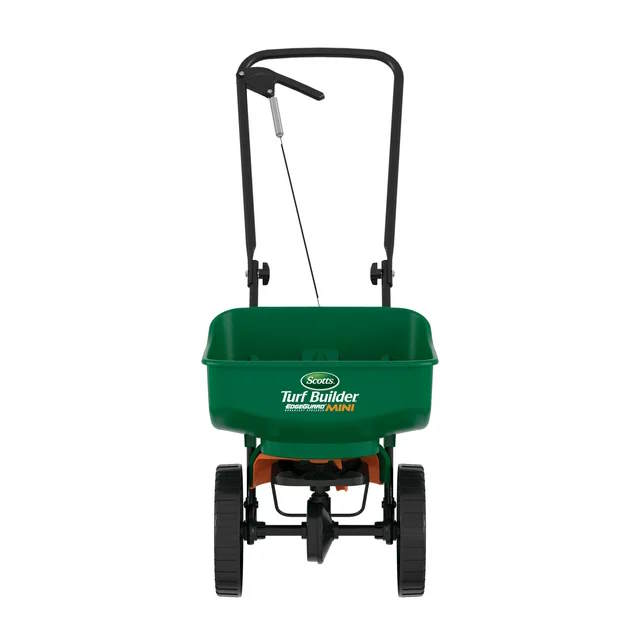
A compact broadcast spreader that is ideal for smaller areas, yet can hold enough seed or feed to cover up to 5,000 sq. ft.
6. Apply feed
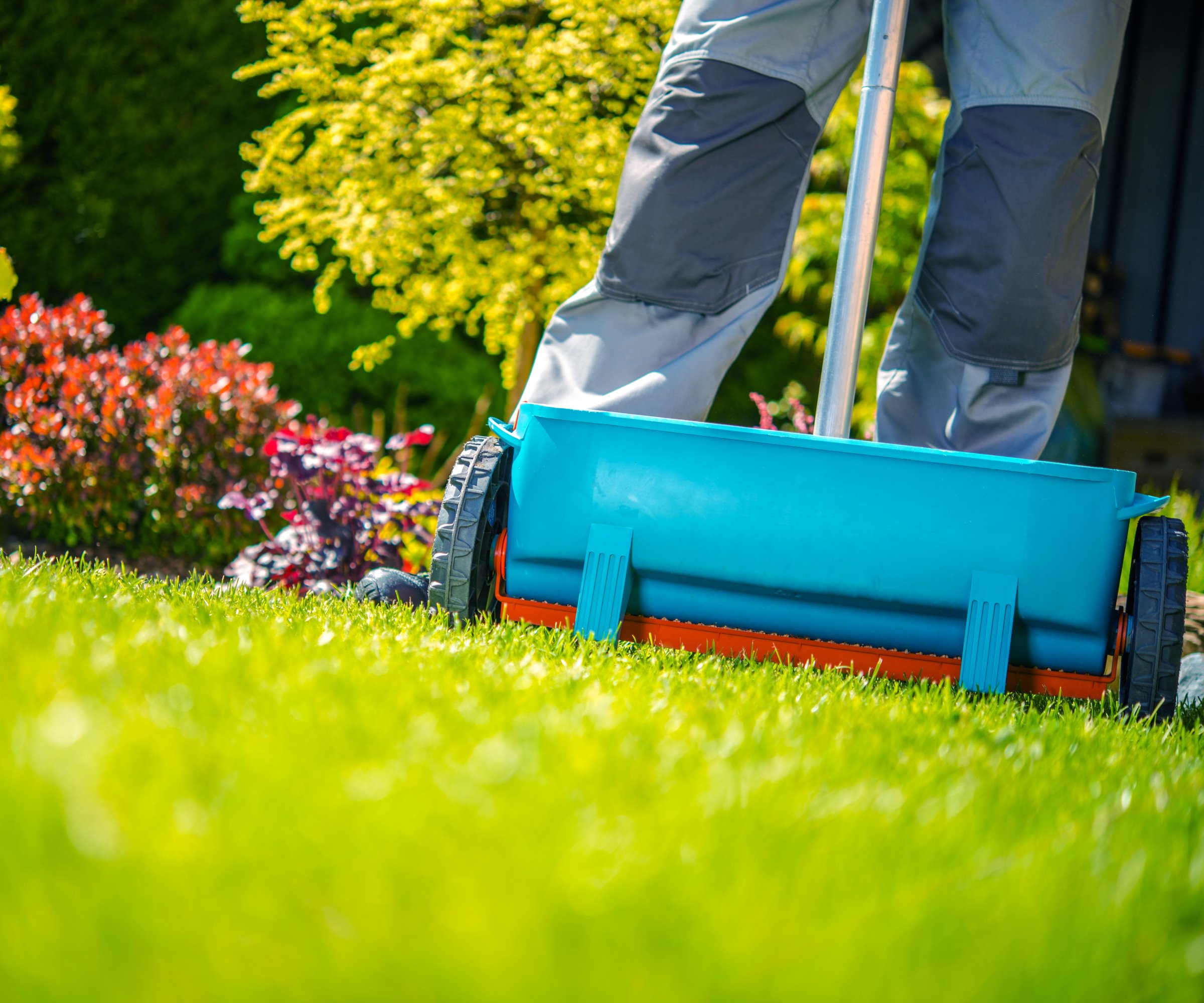
The addition of a slow-release spring lawn fertilizer can provide a lawn with all the nutrients required to grow strong and healthy.
Take care not to over-fertilize a lawn in spring, however, as it will result in lots of leafy growth at the expense of root development, weakening the grass overall. Just like with overseeding, the feed can be applied by hand or with a push-along spreader - and the lawn does want to be watered afterwards.
It is advisable to wait around a month after seeding to fertilize the lawn unless you use a fertilizer designed for use when planting grass.

A product designed to be used when planting new grass. A combination of pre-emergent weed killer plus lawn fertilizer, so you can plant grass seed and prevent weeds at the same time
7. Combat weeds

Weeds are unwanted sights in many people’s lawns. If you strive for a pristine lawn that is free of weeds, then spring can be an ideal time to deal with any unwanted plants before they start to establish. Large perennial weeds can be removed by hand using a knife or garden fork and it is important to remove all the roots to prevent the weed from simply resprouting.
Pre-emergent herbicides can be applied in spring to prevent weeds from sprouting, or post-emergent herbicides can be selectively applied to weeds that are actively growing as they are designed to kill weeds but not grass.
If you want to combine treatments, then you can get products that both weed and feed a lawn in spring - such as this weed and feed lawn fertilizer available at Amazon.
FAQs
Can you top-dress a lawn in spring?
Yes, you can top-dress a lawn in spring. Top dressing can help level the surface of the lawn, deal with thatch, and improve drainage when done in association with aeration. It is a task that can be done anytime when the grass is growing, ideally in spring or fall along with other lawn care tasks.
As well as spring, fall is another busy time for lawn care. The likes of mowing, scarifying, aerating, and feeding are also important parts of a good fall lawn care maintenance regime to help protect the grass from any potentially damaging effects of winter.
Sign up to the Homes & Gardens newsletter
Design expertise in your inbox – from inspiring decorating ideas and beautiful celebrity homes to practical gardening advice and shopping round-ups.

Drew’s passion for gardening started with growing vegetables and salad in raised beds in a small urban terrace garden. He has worked as a professional gardener in historic gardens and specialises in growing vegetables, fruit, herbs, and cut flowers as a kitchen gardener. That passion for growing extends to being an allotmenteer, garden blogger, and producing how-to gardening guides for websites. Drew was shortlisted for the New Talent of the Year award at the 2023 Garden Media Guild Awards.
You must confirm your public display name before commenting
Please logout and then login again, you will then be prompted to enter your display name.
-
 The 5 worst things you can do to your fridge – these will drive up energy costs and result in pricey and regrettable repairs
The 5 worst things you can do to your fridge – these will drive up energy costs and result in pricey and regrettable repairsIt's crucial to swerve these blunders, appliance experts warn
By Ottilie Blackhall Published
-
 Orange and green is the bold color pairing quietly transforming homes in 2025 – here's 4 reasons why
Orange and green is the bold color pairing quietly transforming homes in 2025 – here's 4 reasons whyInterior designers are making the orange and green combination work wonders – this is how you can too
By Sophia Pouget de St Victor Published